Euphorbia is a genus of plants that includes a large number of species, among which there are herbs, shrubs, and even small trees. All of them contain poisonous juice that looks like milk. Often the word "euphorbia" is associated with a weed growing on the street. However, some species of milkweed are grown as a houseplant.
Content
Characteristic of a flower Euphorbia with photo
Indoor euphorbia is a succulent that accumulates moisture in its fragile shoots and leaves. In the tissues of the plant is milky juice, which is released when damaged. Euphorbia juice contains some toxic substances that protect against various parasites.
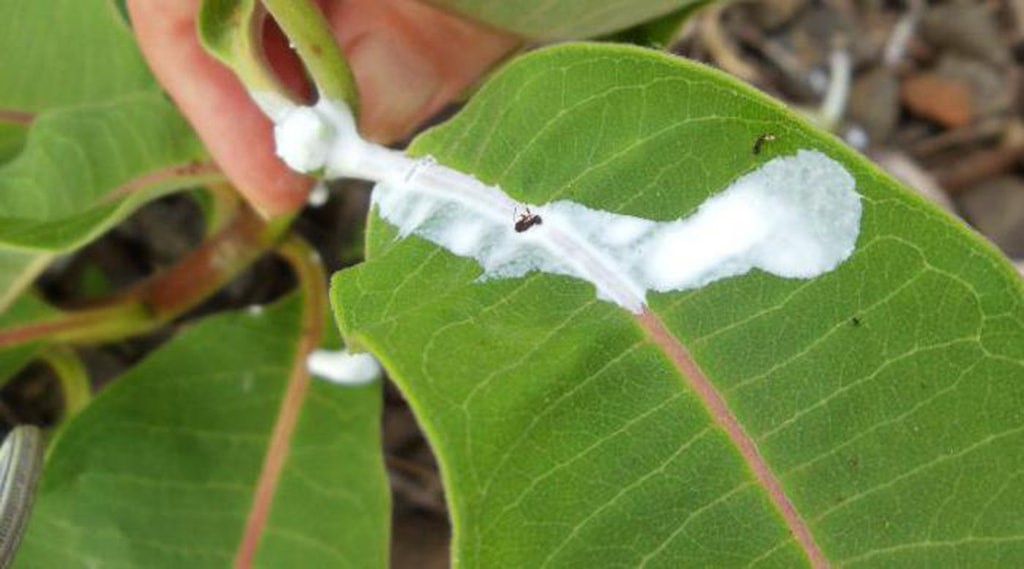
Milkweed leaves are located against each other, they come in various shapes and sizes:
- oblong;
- ovoid;
- torn;
- simple.
As can be seen in the photo, some indoor flower species have underdeveloped leaf plates resembling spikes or hairs.
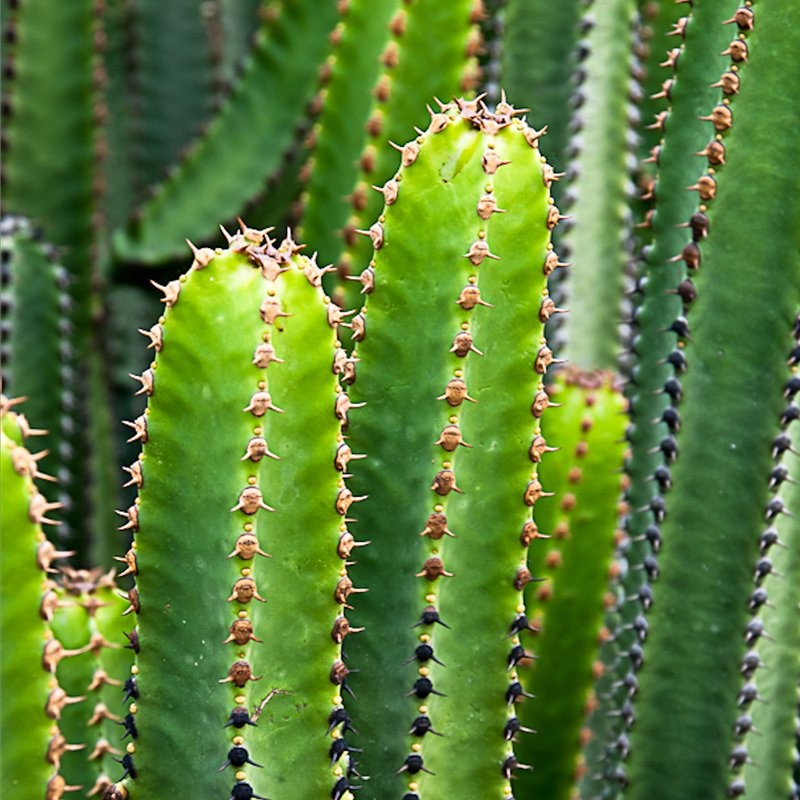
Milkweed stems are straight or ascending; their shape depends on the type of plant. Most varieties have simple leaf-covered stems; some have thorns. There are also species that look like a cactus.
Flowers form a special type of inflorescence - sympodial, or cymose. Each inflorescence is surrounded by two covering sheets. The flowering period occurs in the summer months, and some species bloom in the fall.
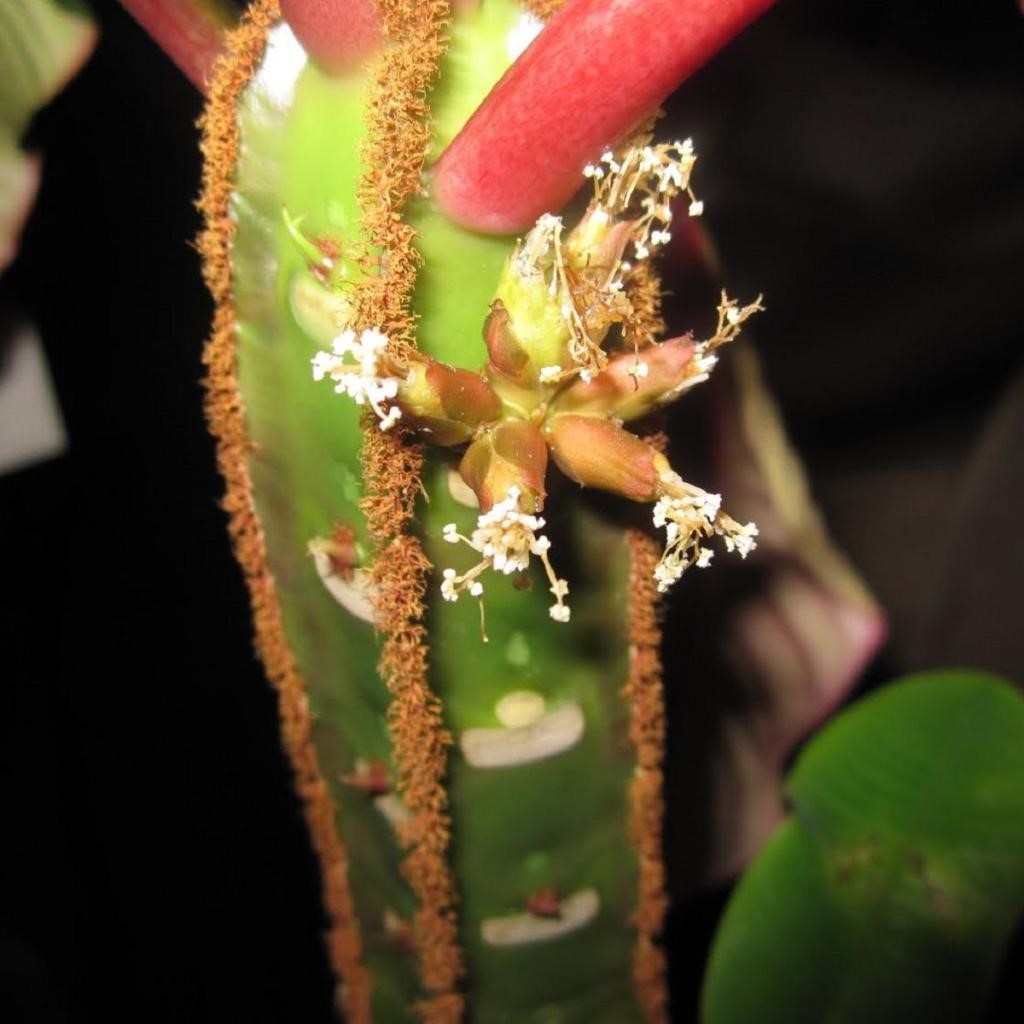
Among milkweeds, both dioecious and monoecious plants are found. Small three-lobed fruits appear in place of the flower, which crack after ripening and break up into three nuts. Each nut contains one smooth seed.
Species diversity
The genus Euphorbia unites more than 2 thousand plants. Some of them grow on the street, but there are indoor views. Most commonly found as a home plant:
- Euphorbia Whitewashed. The most common perennial species resembling a palm tree. It has large oval leaves with pronounced white veins. White milkweed flowers are small and inconspicuous; after wilting, seeds appear in their place.
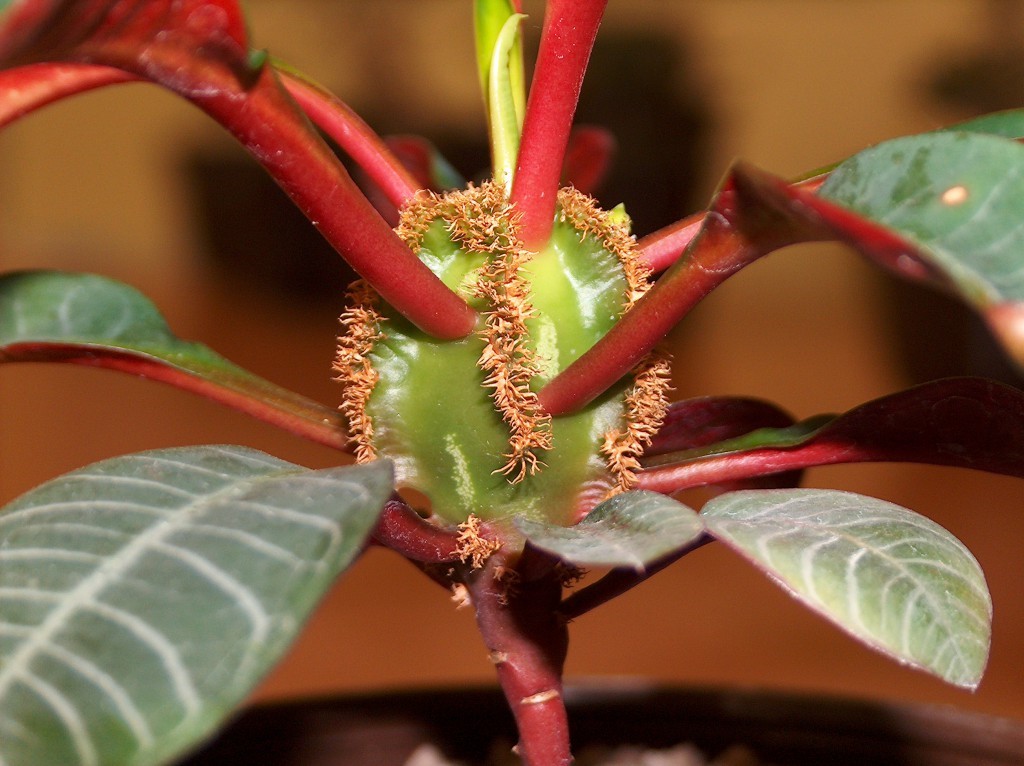
Euphorbia Whitewashed - Euphorbia Tirucalli is a perennial indoor flower. A feature of this succulent is the complete absence of leaves. The whole flower consists of sticks-stems sticking out in different directions. This species blooms rarely and only with proper care.
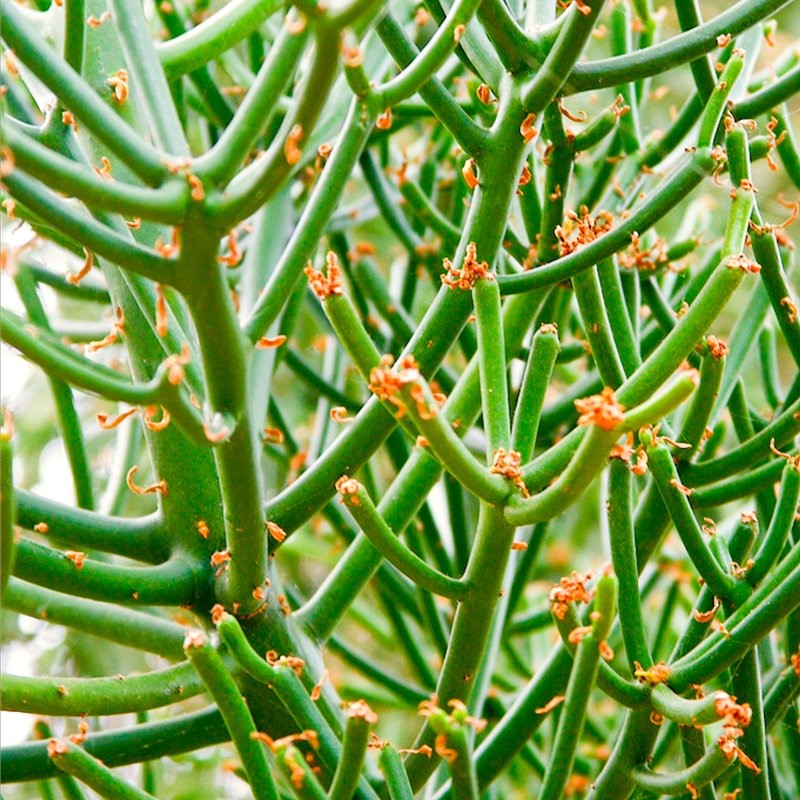
Euphorbia Tirucalli - Euphorbia Trihedral. Grows in the form of a bush with thick trihedral shoots. On the dark green branches, light dashes and red-brown spikes are clearly visible. The leaves of the milkweed Trihedral are very small and resemble a shoulder blade.
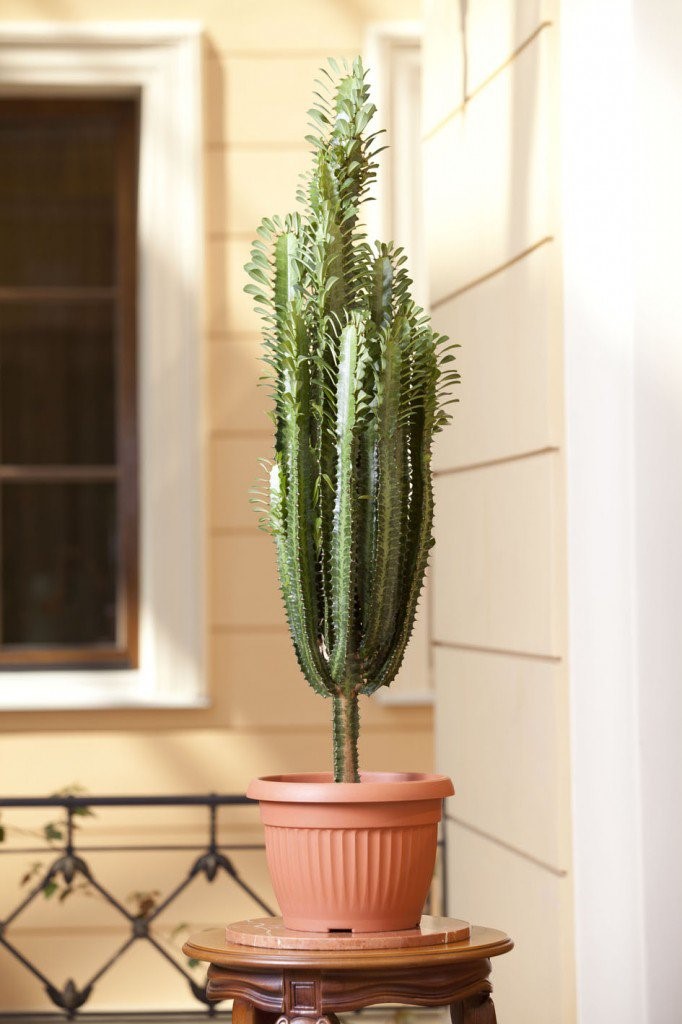
Euphorbia Trihedral - Euphorbia Mile. A small shrub with a branched ribbed stem. Its top is framed by green egg-shaped leaves and small grouped flowers of scarlet, purple, lemon or orange.
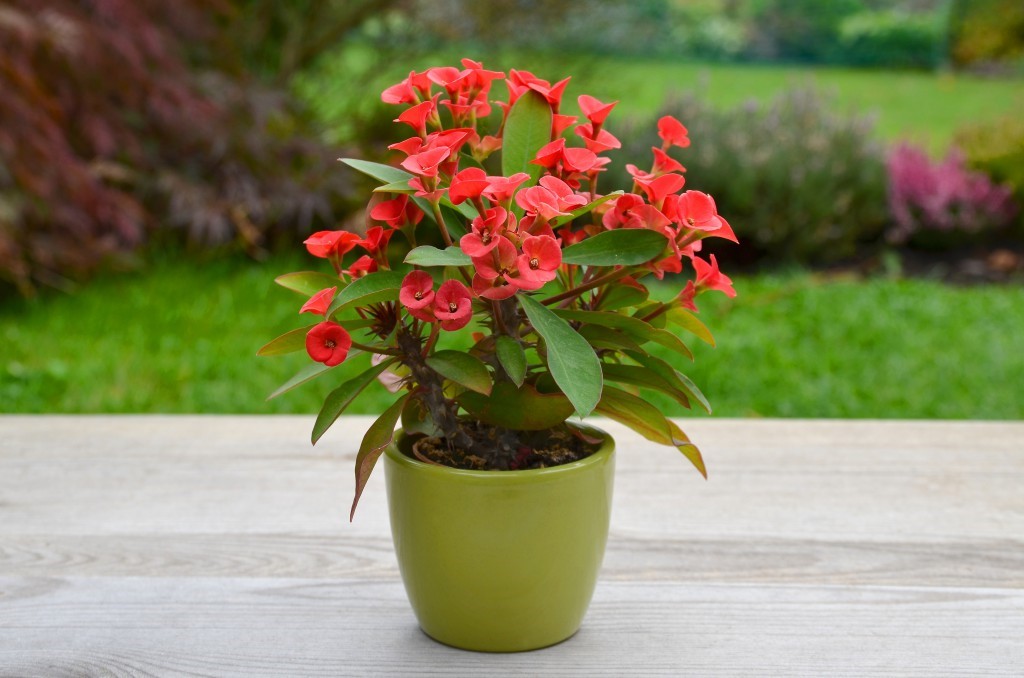
Euphorbia Mile - Euphorbia Fat. A perennial flower resembling a round cactus without thorns. It has almost imperceptible ribs. The diameter of euphorbia fat can reach 8 cm. Sometimes small flowers appear on the top of the plant.
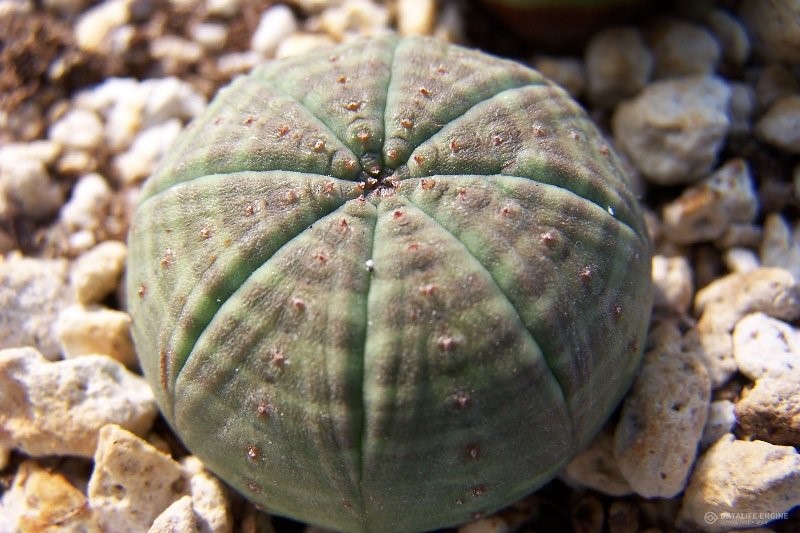
Euphorbia Fat
This is only a small part of all types of indoor euphorbia. All of them are not similar to each other and have a unique structure.
Milkweed Care at Home
Despite the large number of species, care for decorative milkweed is about the same. Since euphorbia is a succulent, caring for it is extremely simple. However, in order to grow a beautiful and healthy flower at home, you still need to know some of the features of care.
Watering and humidity
Euphorbia is able to accumulate moisture, so you do not need to water it too often. In the summer heat, it is enough to do this 2 times a month. In winter, you can water a flower at least once every 30 days.
Shine
Euphorbia requires good bright lighting. If there is not enough light, the flower will stretch strongly up and lose its attractiveness. Species that do not have leaves are not afraid of direct sunlight, so they can be left in the sun in the midday heat. Species with large leaves are better for shading, as the sun's rays can burn the plant.
Temperature
All types of euphorbia love the heat and only a few of them tolerate low temperatures. During the growth period - in summer and spring - the temperature will be optimal above 20 degrees. During winter dormancy, you can reduce the temperature to 10-15 degrees. Succulents should be protected from through winds and strong temperature fluctuations.
Fertilizer
Succulents do not need to be fertilized during dormancy, but in spring and summer it is very important to regularly feed. Fertilizers for indoor plants, cacti and succulents will be most suitable. Feeding with high amounts of nitrogen should be avoided. You need to fertilize the plant every two weeks.
Before planting, you also need to apply fertilizer. You can add birch ash and compost to the soil.
Which soil to choose
The substrate for euphorbia can be purchased at the store or prepared independently. In the store you need to choose a special soil for cacti and succulents. Charcoal and compost can be added to the finished soil.
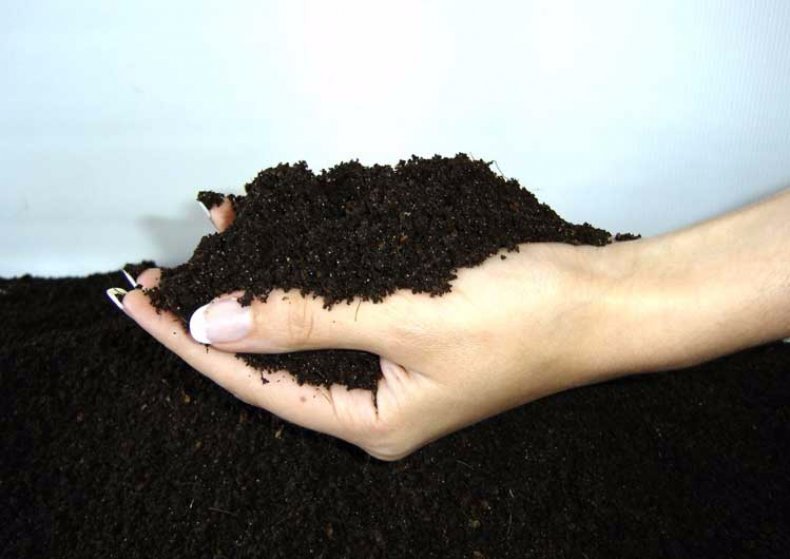
To prepare the soil yourself, you need to mix an equal amount of coarse sand and turf. Leafy soil is also suitable. It should be mixed with sand in a ratio of 1: 2 and add a few teaspoons of humus. Before planting, the ground must be calcined in the oven or steamed.
Pests, diseases and treatments
Often a flower loses its attractive appearance and begins to fade. The cause of this can be various diseases. If the flower has become unhealthy, it is necessary to establish watering and improve lighting. Also, the plant can be affected by various fungi and viruses, to combat which you will have to resort to chemicals. To determine what exactly the flower is sick with, you need to conduct a thorough examination. The following diseases most commonly affect euphorbia:
- Gray rot. Brown spots appear on the leaves, which gradually increase in size. Over time, the leaf of milkweed rots completely. To prevent the occurrence of rot, it is necessary to properly water the flower and use loose soil for planting. If the disease has already occurred, you need to treat the succulent with fungicides.
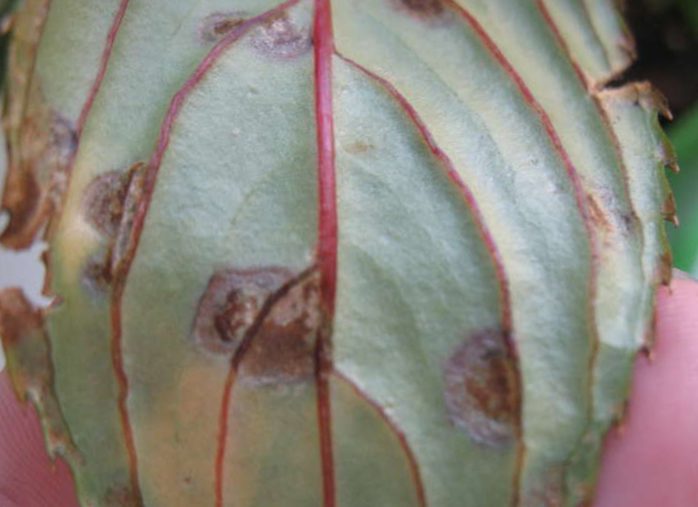
Gray rot - Dry spotting is a fungal disease, the appearance of which is indicated by dark spots on leaf plates. First of all, the disease affects the old leaf plates, but soon spreads to younger ones. To cure a flower, you need to treat it with systemic fungicides, such as Ridomil Gold, Skorr.
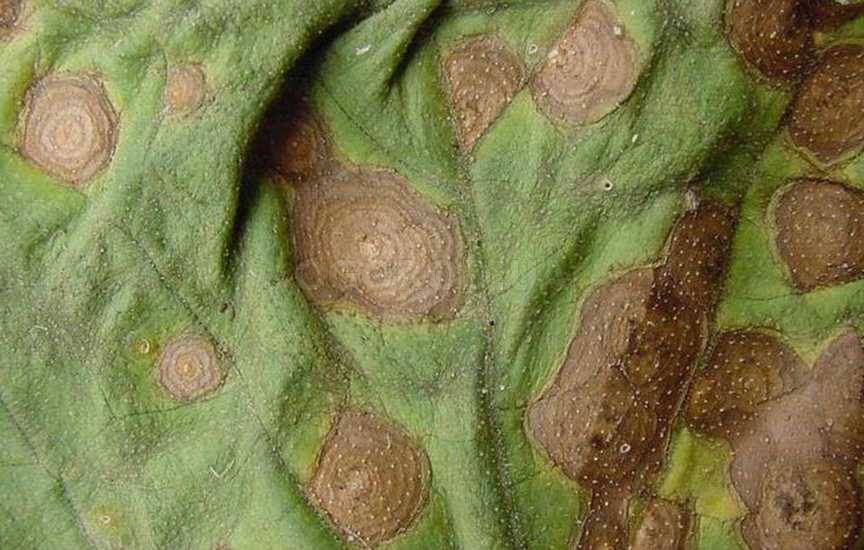
Dry spotting - Stem rot. Dark depressed spots appear at the base of the stem, which gradually grow and affect the internal tissues.Over time, the stem breaks and the flower dies. Against the fungus, systemic and biological fungicides are used, such as Trichodermin, Trichophytum, Fitolavin and others.
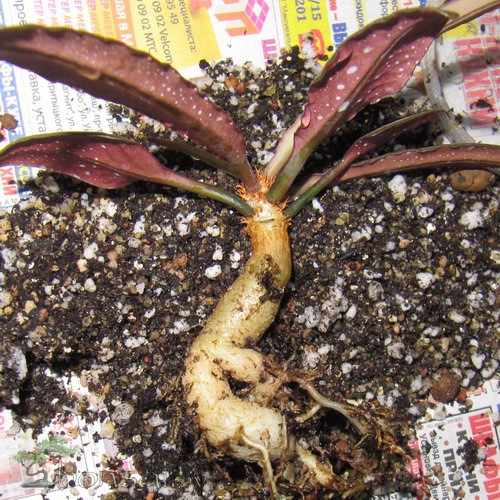
Stem rot - Tobacco mosaic is a viral disease transmitted by insects. To avoid infection, you need to treat the flower with insecticides. If a plant becomes sick, its leaves are deformed and covered with colorful spots. To cure a sick succulent, you need to treat it with a solution of whey (100 ml of serum per 1 liter of water) with the addition of various micronutrients. You also need to replace the topsoil in the pot.
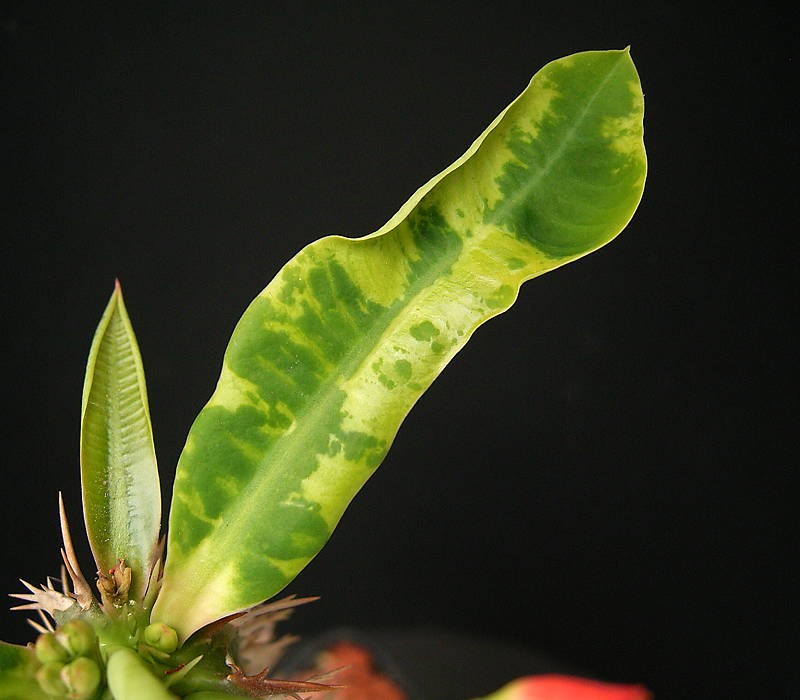
Tobacco mosaic
Another problem for gardeners can be the appearance of pests. The following parasites can attack euphorbia:
- Aphids are small lemon or emerald insects that can be detected with the naked eye. Leaf plates under the influence of these parasites are deformed and change color, and the flower stops developing. Insects should be removed from the plant manually, and the affected areas trimmed. After that, treat the flower with Fitoverm or another insecticide.
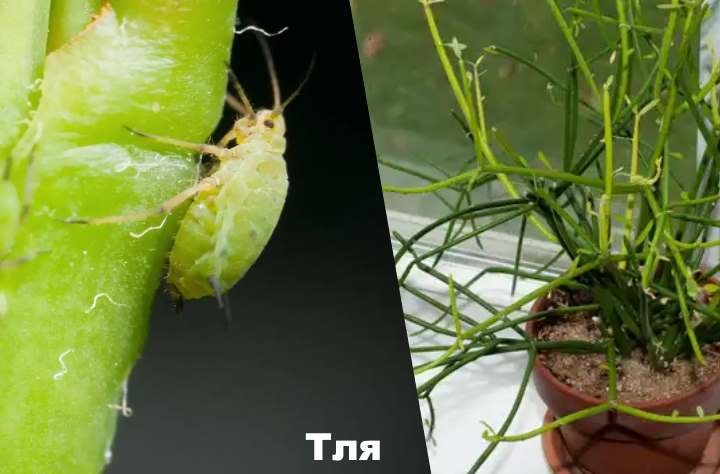
Aphid - Whitefly is a small yellow and white midge that is easy to notice when viewed. The greatest danger is whitefly larvae. They feed on plant juice. As a result, the affected leaves become stained, curl up and crumble. To cure succulents, you need to trim the damaged areas and carry out the treatment with an insecticide.
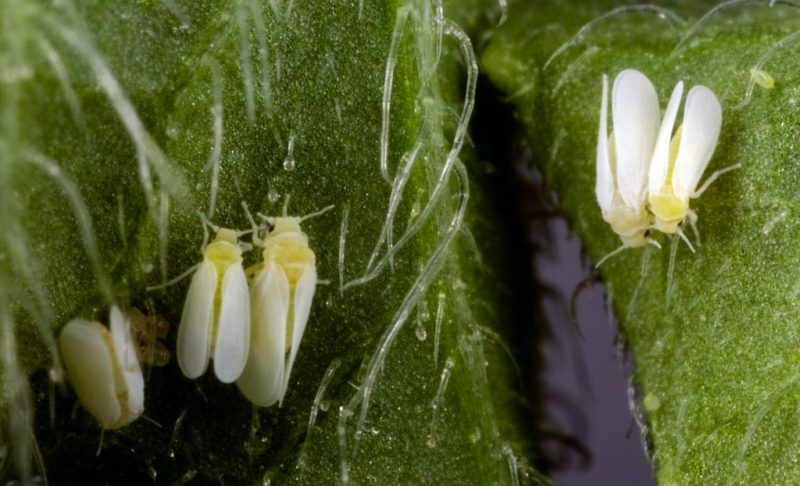
Whitefly - Mealybug root is a small white insect that parasitizes on the roots of a plant. It is not easy to notice the parasite, it appears on the root neck of the flower some time after the lesion. The leaves of the affected plant turn yellow and fall. To get rid of insects, you need to dig a flower and clean the roots of the earth and parasites. After that, treat the root system and plant with an insecticide. The pot needs to be sanitized and filled with fresh soil.
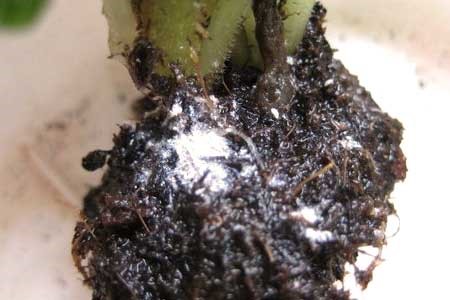
Mealybug root - The red spider mite is a small parasite, mainly affecting the young leaves of the flower. White or yellow spots on young leaves may indicate its presence. Sick plants can be covered with cobwebs. Treatment with parasites will help the treatment with soapy water. With severe damage, acaricides are used.
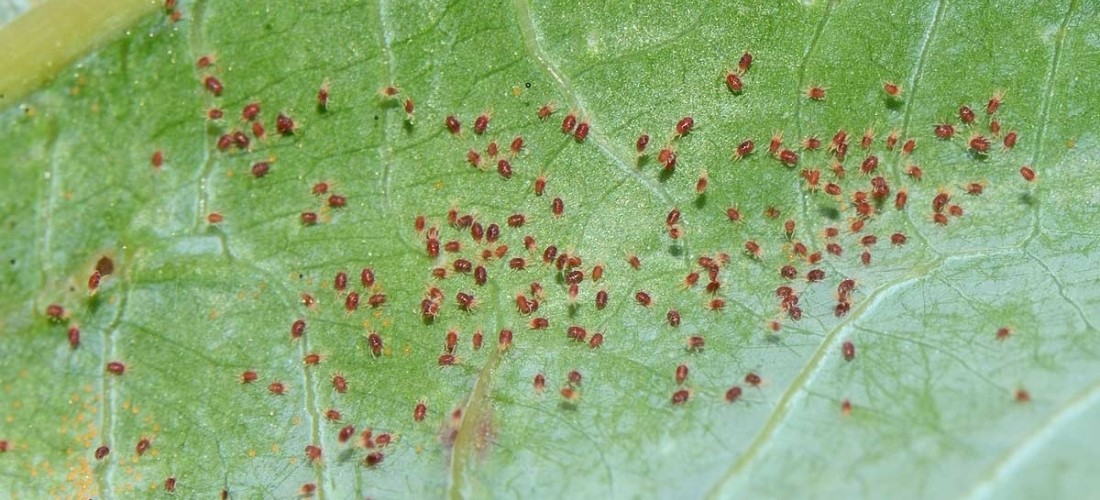
Red spider mite
In order to prevent the occurrence of diseases or parasites, it is necessary to follow the rules of care. It is also important to regularly inspect the flower in order to identify the problem in time.
How to propagate and transplant a flower at home?
You need to transplant the euphorbia in the spring, once every few years. You need to do this if the plant has grown too much or got root rot. The transplant process can be divided into several steps:
- Pick a suitable pot. It should not be excessively spacious, but at the same time there should be enough space in it for the rapidly growing roots of the plant.
- Lay a layer of drainage on the bottom of the pot. Sprinkle it with wood bark.
- Water the flower abundantly.
- Carefully remove it from the pot.
- Remove damaged and rotten roots.
- Brush off excess soil.
- Place the plant in a prepared pot and sprinkle with soil.
- Tamp and gently pour.
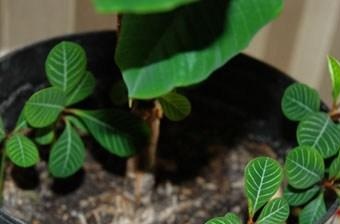
During the transplant, the plant can be propagated. To do this, you must carefully divide the root into several parts. Each part must contain at least one kidney. The places of cuts must be treated with charcoal, and then plant the plants in different pots.
Euphorbia can also be propagated using seeds and cuttings. To germinate the seeds, do the following:
- Sow seeds in light soil to a depth of 2.5 cm.
- Cover the container with foil and ventilate regularly.
- Keep the soil moist.
Propagation by cuttings also includes several stages:
- Nip off a small leaf from an adult plant.
- Sprinkle with root growth stimulant.
- Plant in the soil and water abundantly.
- Cover with foil.
- Ventilate regularly.
The process of rooting cuttings lasts about a month. This is the most common method of milkweed propagation, since it is the simplest.
Common Milkweed Care Questions
Euphorbia is an unpretentious indoor plant that is suitable for both experienced and beginner gardeners. Euphorbia does not require special care and does not need frequent watering and top dressing.




 10 beautiful annuals that bloom all summer
10 beautiful annuals that bloom all summer Sow in the ground, without seedlings: 10 beautiful and unpretentious flowers
Sow in the ground, without seedlings: 10 beautiful and unpretentious flowers Platicodon planting and outdoor care
Platicodon planting and outdoor care Hosta - planting and care in the open ground in the Urals
Hosta - planting and care in the open ground in the Urals